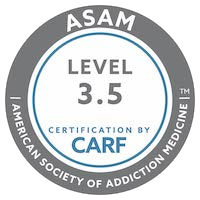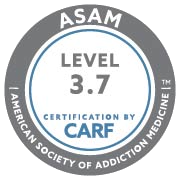For many living in rural America, accessing treatment for substance use disorders presents significant obstacles. While the prevalence of alcohol, opioid, and drug dependencies continues to grow, individuals in these regions face unique barriers that make seeking treatment more difficult. From limited resources to higher out-of-pocket costs, the challenges can be overwhelming and prevent many from getting the help they need.

A recent study sheds light on the disparities faced by rural populations, revealing that these individuals are more likely to struggle with access to treatment and less likely to maintain ongoing care for substance use disorders. The study indicates that when those in rural areas do seek treatment, they often must go outside their insurance networks, leading to higher personal costs and fewer treatment options.
Barriers to Care
Rural communities are often plagued by a lack of behavioral health providers and fewer healthcare resources overall. This scarcity is further complicated by the structure of most insurance plans, which frequently rely on managed care systems with restricted provider networks. This combination of factors leaves rural residents with fewer choices and makes it harder to find accessible and affordable care.
The study, which analyzed data from millions of insurance claims, found that fewer than half of individuals with substance use disorders received treatment. Rural patients were particularly less likely to initiate care for alcohol, opioids, or other drugs compared to their urban counterparts. For example, only 37% of rural patients started treatment for alcohol use disorder, compared to 38% in urban areas, and just 41% of rural patients initiated care for opioid use disorder, compared to 44% in urban regions.
The gap doesn’t stop at initiation. Rural patients were also less likely to continue with treatment once it had started. Only 15% of rural patients remained in care for alcohol use disorder, compared to 17% in urban areas, while 21% of rural patients stayed in treatment for opioid use disorder, compared to 23% in urban locations.
The Financial Burden of Out-of-Network Care
In addition to the lower rates of care initiation and continuation, rural patients are more likely to seek care outside of their insurance networks. This out-of-network care leads to significantly higher out-of-pocket costs, further discouraging individuals from continuing treatment.
The study highlights the importance of recognizing these geographic and financial barriers in addressing substance use disorders. Many rural patients are left without affordable care options, creating an additional burden that only worsens the public health crisis.
A Path Forward: The Collaborative Care Model
One possible solution to these challenges is the Collaborative Care Model, which has shown promise in recent years. This model enables primary care clinicians to collaborate with behavioral health care managers and psychiatric consultants, providing comprehensive care for substance use disorders without requiring specialized providers to be physically present in rural areas. This care is often delivered virtually, allowing for ongoing treatment and medication management to be handled remotely while being billed through the patient’s primary care provider.
The Collaborative Care Model is a practical response to the provider shortages in rural areas, helping bridge the gap between need and available resources. By leveraging technology and integrated care teams, it offers rural populations a more accessible and sustainable way to receive treatment for substance use disorders.
Addressing the Broader Issue
While much attention has been focused on the opioid crisis, the disparities uncovered by this study show that the challenges extend across all substance use disorders. Regardless of the specific substance, rural patients are more likely to face higher out-of-network costs and less likely to engage in care. This trend highlights the need for broader policy changes that extend beyond a single substance issue.
The study’s findings emphasize the importance of expanding access to behavioral health services in rural areas. Telehealth and integrated care models, like the Collaborative Care Model, are steps in the right direction. However, further efforts are needed to lower out-of-pocket costs and improve insurance coverage, ensuring that rural residents can access the care they need without financial hardship.
The Hidden Dangers of Substance Use
The hidden dangers of substance use are particularly profound for teenagers. Understanding the appeal, risks, and real-life consequences of substance use is essential in preventing its spread. By combining education, regulation, support, and community involvement, we can create a safer environment for teens and help them make healthier choices. Raising awareness about these dangers is not just a parental or educational responsibility, but a community imperative.
Help Is Available: Hathaway Recovery
For those struggling with substance addiction, help is available. Hathaway Recovery offers a lifeline for individuals seeking to overcome addiction. With a promise of a new beginning, Hathaway Recovery extends its helping hand to those in need. Their dedication to renewing and rebuilding lives is evident in their comprehensive approach to treatment and care. The Hathaway Recovery Admission Department provides confidential assistance and can be reached at (909) 971-3333. They offer a pathway to recovery and a chance to embark on a transformative journey towards a healthier, more fulfilling life.






